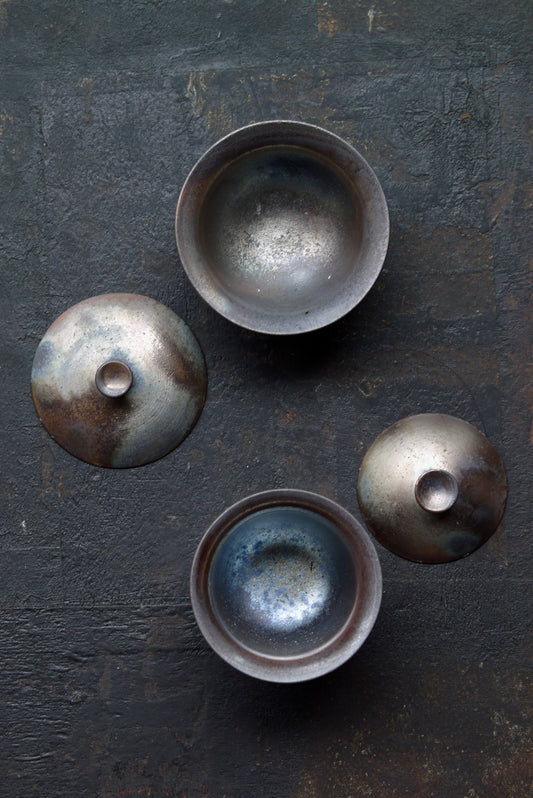
What tea is best to drink in Autumn?
YuanKevinShare
Since the beginning of autumn, high temperatures have continued to persist, with extreme weather of 37 to even 42 degrees still affecting large areas of southern China. This is because the “Three Fu” (dog days of summer) have not yet ended, and the “Autumn Tiger” will last until late September or even October. As we enter the “Autumn Tiger” period, the most typical characteristic is the apparent autumn dryness—drought, little rain, and the ease of getting overheated. During this time, maintaining health becomes particularly important, and drinking tea is crucial. So, what tea is best to drink in autumn?
From a traditional health perspective, autumn is a time when yin and yang reverse, with yin energy gradually taking the lead. At this time, it's essential to avoid overly cooling teas to prevent shocking the body. Similarly, overly warm black teas are also not suitable for consumption right after the start of autumn. However, as deep autumn approaches, black tea can become a good choice. Since we are now in the early autumn phase, with the “Three Fu” period not yet over, people are still focused on cooling off. Therefore, the best choice is to drink teas that are balanced and moderate. Here are some recommended teas for autumn.

White Tea: A Lightly Fermented Deligh
White tea is a lightly fermented type of tea. It has a needle-like appearance, covered in fine white hairs, giving it a silvery white, glistening appearance. The liquor and leaf base are pale and clear, which is why it's called white tea. The traditional method of making white tea involves picking fresh buds and leaves, drying them without pan-frying or rolling, and allowing them to wither and dry naturally. This simple process allows the tea’s character to shift from cool to more balanced, making it particularly suitable for drinking in early autumn, especially after long-term storage, which further reduces its cooling nature.
The history of white tea is long and somewhat disputed, with some believing it originated in the Northern Song Dynasty, while others argue for a later Ming or Qing origin. Regardless of its exact beginnings, white tea's unique processing and taste have made it a preferred choice for autumn wellness.

Oolong Tea: The Ideal Choice for Moistening and Refreshing
There is a saying: "Drink flower tea in spring, green tea in summer, oolong tea in autumn, and black tea in winter." Oolong tea, also known as green tea, is ideal for autumn. It has a warm, moderate character—neither too cold nor too hot—which helps to moisten the skin and throat, eliminate internal heat, and achieve the effect of clearing dryness and generating fluids. The processing of oolong tea is unique, with fermentation levels ranging from 10% to 70%, resulting in a complex and varied taste profile that includes floral, fruity, milky, and woody notes. Each person's experience with oolong tea may differ, truly embodying the saying "different teas for different people."
Oolong tea has a rich history, dating back to the Song Dynasty's Dragon-Phoenix cake, with its full development occurring during the Qing Dynasty's Yongzheng reign. Today, oolong tea is not only produced in Fujian but has expanded to Guangdong, Taiwan, and even parts of southwestern China.
Chrysanthemum Tea: A Traditional Beverage for Clearing Heat
Chrysanthemum tea is another popular autumn drink. Chrysanthemums are one of China’s top ten famous flowers, and they are found throughout the country. According to traditional medicine, chrysanthemum is cold in nature, having endured both heat and cold, and carries the pure energy of heaven and earth. It has the functions of clearing heat, detoxifying, dispelling wind, calming the liver, and brightening the eyes. Therefore, drinking chrysanthemum tea during this time is ideal for clearing heat and reducing internal fire.
Additionally, chrysanthemum tea is rich in flavonoids, which help to dilate coronary arteries, increase coronary blood flow, and provide relief for angina. It also effectively treats eye fatigue and blurred vision, making it a good choice for those with excessive liver fire or those who strain their eyes frequently.
Autumn is a season of changing yin and yang and fluctuating weather, making it essential to choose the right tea to help the body adjust. White tea, oolong tea, and chrysanthemum tea are all suitable choices for autumn, helping to clear heat, moisten dryness, and generate fluids, providing strong support for autumn wellness.
Extending our thoughts further, one might wonder: How is white tea made? What is the process for making oolong tea? And what type of teaware should be used to brew these teas to best showcase their unique flavors and qualities?
*The photographic on the top is from Xubai Teahouse.








